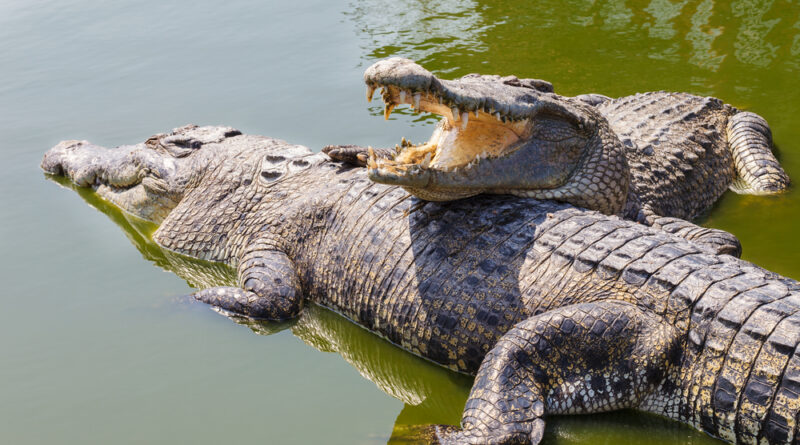Nile Crocodile Reproductive Anatomy
Nile Crocodile Reproductive Anatomy The Nile crocodile (Crocodylus niloticus) is one of the most well-known and widespread species of crocodilians, found in various freshwater habitats across Africa. As apex predators, Nile crocodiles play a crucial role in maintaining the health of aquatic ecosystems. Understanding their reproductive anatomy is essential for comprehending their life cycle and conservation needs. This article explores the unique reproductive structures of Nile crocodiles and highlights their significance in the species’ survival and adaptability.
General Anatomy of Nile Crocodiles
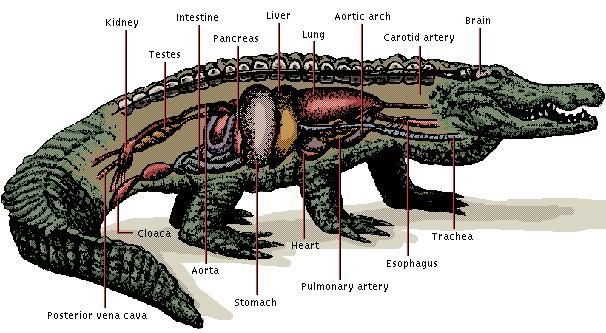
Crocodilians, including Nile crocodiles, possess a unique anatomy that reflects their semi-aquatic lifestyle. Their robust bodies, powerful jaws, and specialized limbs allow them to thrive in diverse environments. Key anatomical features relevant to reproduction include their integumentary system, which plays a role in thermoregulation, and their efficient cardiovascular system, which supports the demands of reproduction.
Here’s a table summarizing key aspects of Nile crocodile reproductive anatomy:
| Aspect | Details |
|---|---|
| Species | Nile Crocodile (Crocodylus niloticus) |
| Habitat | Freshwater habitats across Africa |
| Cloaca | Multifunctional opening for excretion and reproduction |
| Male Anatomy | |
| – Penis | Everted during copulation; not externally visible at rest |
| – Testes | Internal, located near kidneys; produce sperm during breeding season |
| Female Anatomy | |
| – Ovaries | Two ovaries capable of producing 20-100 eggs per season |
| – Uterus | Site for egg development before laying |
| Mating Rituals | Vocalizations, water splashing, and physical displays to attract females |
| Copulation | Involves cloacal contact; can last several minutes |
| Nesting | Constructs nests using vegetation and mud; selects sunny, elevated locations for optimal incubation |
| Parental Care | Guards nest, regulates temperature; assists hatchlings in reaching water |
| Egg Incubation Period | Approximately 60 to 90 days, depending on environmental conditions |
Male Reproductive Anatomy
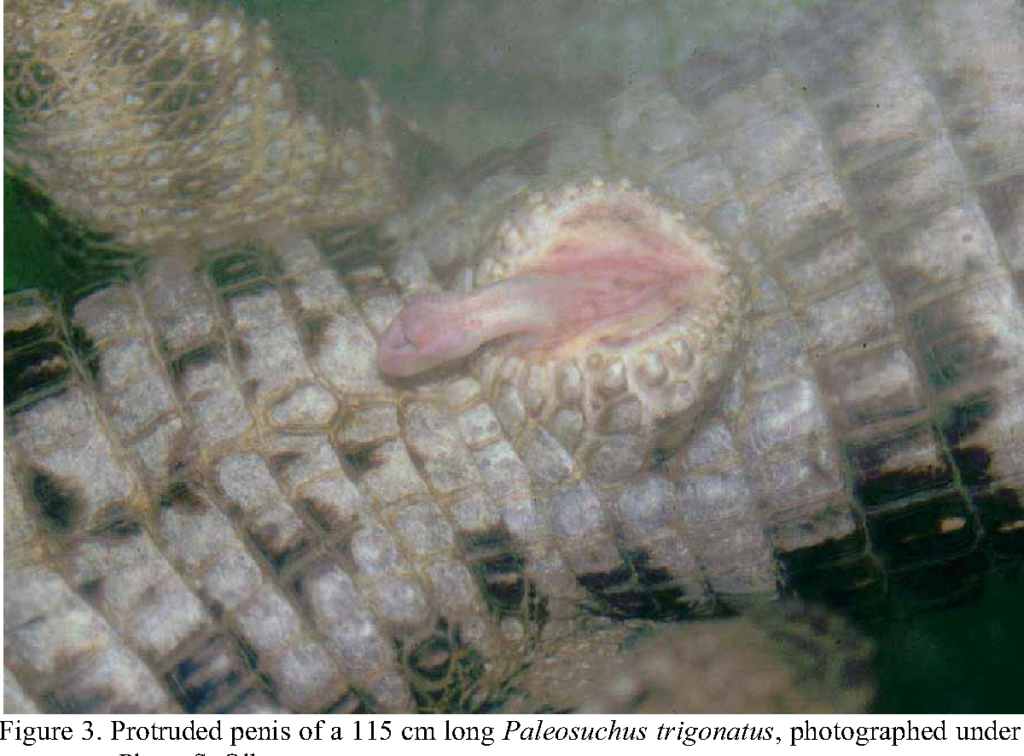
A. Cloaca and Its Functions
The cloaca serves as a multifunctional orifice for Nile crocodiles, facilitating both excretory and reproductive processes. It is a common chamber that allows for the expulsion of waste as well as the transfer of sperm during copulation.
B. Penis Structure
The male Nile crocodile has a unique reproductive organ known as the penis, which is not externally visible at rest. The penis is stored within the body and can be everted (turned inside out) during copulation. This eversion mechanism allows for successful mating, as the penis can extend into the female’s cloaca to deposit sperm.
C. Testes and Sperm Production
The testes of male Nile crocodiles are located internally, near the kidneys. They produce sperm in large quantities, especially during the breeding season, which typically occurs during the warmer months. Seasonal variations in testicular activity and size correspond with the reproductive cycle, leading to increased sperm production during mating periods.
Female Reproductive Anatomy
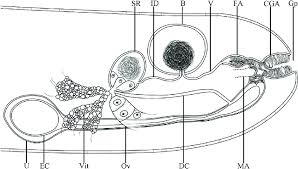
A. Cloaca and Its Functions
Similar to males, female Nile crocodiles also possess a cloaca that serves multiple functions. It acts as the passageway for eggs, waste, and mating.
B. Ovaries and Egg Production
Female Nile crocodiles have two ovaries, which can produce a significant number of eggs each season—ranging from 20 to 100, depending on the individual and environmental conditions. The reproductive cycle is influenced by factors such as temperature and food availability, with females exhibiting seasonal breeding patterns.
C. Uterus Structure
After fertilization, the fertilized eggs develop in the female’s uterus. The uterus provides a safe environment for the eggs, where they can grow until they are ready to be laid. Nile crocodiles typically build nests near water bodies using vegetation and soil, creating a favorable environment for the developing eggs.
Reproductive Behavior
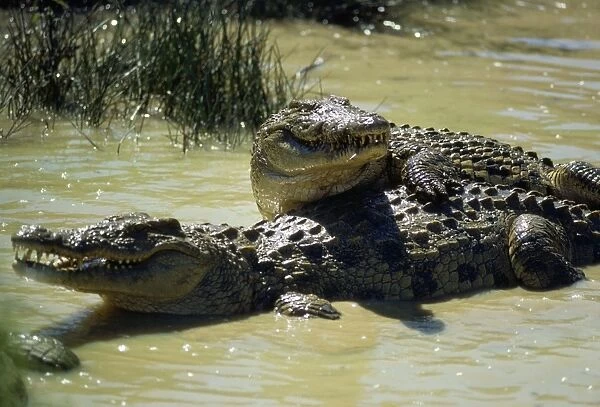
A. Mating Rituals and Courtship
Mating rituals among Nile crocodiles are complex and involve various display behaviors. Males often engage in vocalizations, water splashing, and physical displays to attract females. These behaviors establish dominance and signal readiness to mate.
B. Copulation Process
The copulation process involves the male positioning himself alongside the female, using his powerful body to grip her securely. The act can last several minutes, during which sperm is transferred through the cloacal contact. Successful mating can lead to fertilization of the eggs within the female’s body.
Nesting and Egg-laying
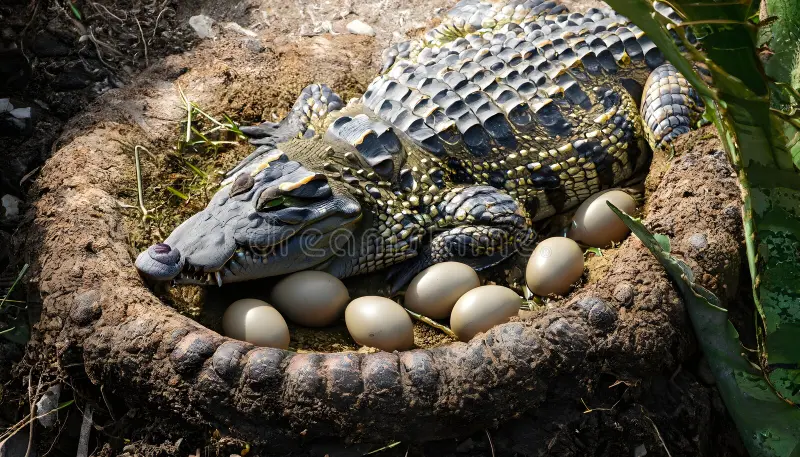
A. Nest Construction
Nile crocodiles exhibit remarkable nesting behaviors, constructing nests using available materials like vegetation and mud. The choice of nest location is critical, as it affects egg survival; females often select sunny, elevated sites to ensure optimal temperature conditions for incubation.
B. Parental Care
After laying their eggs, female Nile crocodiles exhibit parental care, guarding the nest from potential predators and regulating the temperature by modifying the nest environment. The eggs typically take about 60 to 90 days to hatch, depending on environmental conditions. Once the young crocodiles begin to emerge, the mother assists them in reaching the water and provides protection from threats.
Conclusion
The reproductive anatomy of Nile crocodiles is a fascinating aspect of their biology that plays a crucial role in their survival. Understanding their reproductive systems and behaviors enhances our knowledge of their life cycles and informs conservation efforts aimed at protecting this iconic species. As habitat loss and human-wildlife conflict threaten their populations, insights into Nile crocodile reproduction can aid in developing effective management strategies and preserving their ecological significance.
Tips for Studying Nile Crocodile Reproductive Anatomy
Field Observation:
- If possible, observe Nile crocodiles in their natural habitats. Pay attention to mating behaviors, nesting sites, and parental care.
Research Academic Sources:
- Utilize academic journals, books, and reputable websites dedicated to herpetology and crocodilian biology for in-depth information.
Understand Anatomy Basics:
- Familiarize yourself with basic reptilian anatomy to better grasp the specifics of crocodile reproductive systems.
Focus on Seasonal Changes:
- Note how seasonal variations affect reproductive behaviors, such as mating rituals and nesting times, as these can be crucial for successful reproduction.
Learn About Environmental Influences:
- Study how factors like temperature, humidity, and habitat availability impact reproductive success and egg viability.
Use Visual Aids:
- Diagrams and anatomical models can help visualize the complex structures of Nile crocodile reproductive anatomy.
Engage with Experts:
- Attend seminars, workshops, or lectures by herpetologists and wildlife conservationists to gain insights from experienced professionals.
Participate in Conservation Efforts:
- Get involved with local conservation projects focused on crocodile habitats. This hands-on experience can provide valuable insights into their reproductive behaviors.
Document Findings:
- Keep a journal of your observations and research findings to track patterns and enhance your understanding of Nile crocodile reproduction.
Stay Updated:
- Follow recent studies and news related to Nile crocodile conservation and reproduction, as research in this field is ongoing and evolving.
FAQs about Nile Crocodile Reproductive Anatomy
What is the reproductive anatomy of male Nile crocodiles?
- Male Nile crocodiles have a cloaca that serves as a multifunctional opening for reproduction and waste excretion. Their penis is not externally visible and is everted during copulation to deposit sperm into the female’s cloaca. They also have internal testes that produce sperm, particularly during the breeding season.
How do female Nile crocodiles reproduce?
- Female Nile crocodiles have two ovaries that produce eggs, usually between 20 to 100 per breeding season. After fertilization, the eggs develop in the uterus until they are laid in a nest. The female constructs the nest using vegetation and regulates the temperature to ensure successful incubation.
When do Nile crocodiles mate?
- Nile crocodiles typically mate during the warmer months, coinciding with their breeding season. The exact timing can vary depending on environmental conditions and geographic location.
What are the mating behaviors of Nile crocodiles?
- Mating rituals include vocalizations, physical displays, and water splashing by males to attract females. These behaviors help establish dominance and readiness to mate.
How do Nile crocodiles care for their young?
- After laying eggs, female Nile crocodiles guard the nest and help regulate the temperature. Once the eggs hatch, the mother assists the hatchlings in reaching the water and provides protection from predators.
How long does it take for Nile crocodile eggs to hatch?
- The incubation period for Nile crocodile eggs typically ranges from 60 to 90 days, depending on temperature and environmental conditions.
What factors influence the success of Nile crocodile reproduction?
- Factors such as temperature, nesting site selection, food availability, and environmental conditions all play critical roles in the reproductive success of Nile crocodiles.
Are Nile crocodiles monogamous?
- Nile crocodiles are not strictly monogamous. Mating can involve multiple partners, and males may engage in competition for access to females during the breeding season.
What threats do Nile crocodiles face during reproduction?
- Threats include habitat loss, climate change, human encroachment, and predation of eggs and hatchlings by other animals. Conservation efforts are essential to protect their nesting sites and ensure successful reproduction.
How can I help in Nile crocodile conservation?
- You can help by supporting local conservation organizations, participating in educational programs, and spreading awareness about the importance of Nile crocodiles and their habitats.
